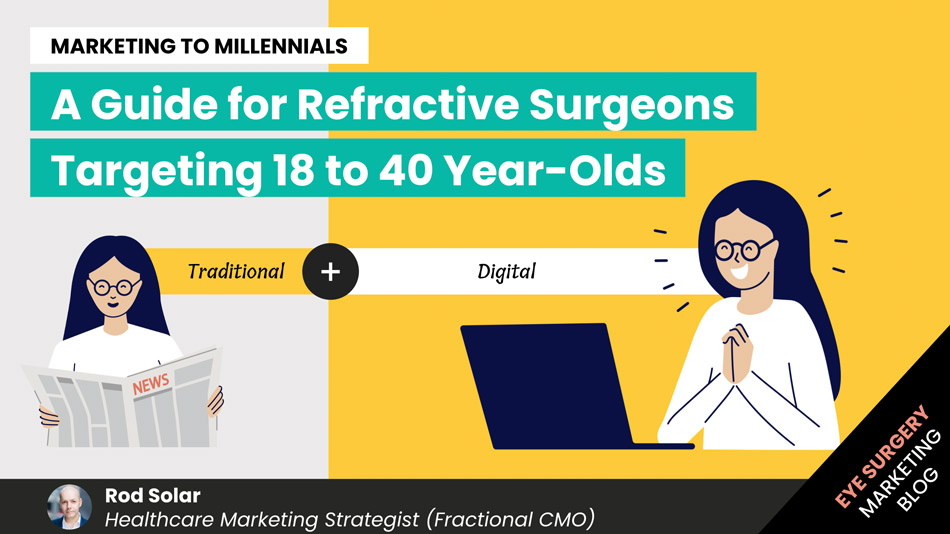
What is schema and why is it a MUST for your SEO?
Why should you care about Schema?
Schema markups are an essential tool to influence how search engines recognise your web pages and increase click-through rates1The ratio of how often people who see your listing on Google click on it to your website. More relevant visitors translate into more leads, and more leads translate into more patients. Thus, while you don’t need to know how Schema works, we advise you appreciate that it exists and ask your SEO if they are implementing it (most aren’t but should).
How does Schema help the user, and what do you get from this?
Let’s imagine, you get on a London Underground train at Bank Station and make your way to the British Museum. While riding the Central line, an announcement says, “The next Stop is Holborn. Exit here for the British Museum”.
You get up and leave the train car. Now, where do you go?
There are several different exits. Undoubtedly, one that leads you to the British Museum without unnecessary detours. You look up to the wall and see a sign with an arrow pointing at the text saying “British Museum”, pointing you in the right direction.
If a developer implements Schema correctly, it can serve as the arrow pointing you in the right direction. All the user needs to do is follow it.
For example, if you search for “liveseysolar healthcare marketing”, you will find that our website shows up as a rich result.
Using Schema, we’ve made it easy for Google to understand the contents of our website. Therefore, Google shows specific results with links to the correct pages based on the search term, directly on search engine results pages (SERP).
In that way, the user can click on the link relevant to the search term without needing to search the internet further.
These search results are called “rich snippets” and are the ultimate goal of using Schema markups. Ours look like this:

NOTE: The best way to answer that nagging question about practice growth or marketing or patient volume in the back of your mind is to book a free 15-minute compatibility call. Get some options and go away with a clear idea of what’s possible.
What’s in it for you, you ask?
There is no irrefutable evidence that Schema directly impacts the SEO rankings. However, there is a reliable indication that search results containing rich snippets have a better click-through rate2https://moz.com/learn/seo/schema-structured-data. They appear more prominent on SERPs, which in return means that people are more likely to click the links3https://www.searchenginejournal.com/technical-seo/schema/. “Average CTR for rich results is 58% compared to 41% for non-rich results. For some rich result types, CTR can jump as high as 87%”4https://www.wordstream.com/blog/ws/2021/09/15/what-is-schema-markup
Another crucial factor is that search engines are more likely to define your content correctly. That means that your website will show up on Google for search terms that you consider essential and are targeting5https://www.wordstream.com/blog/ws/2021/09/15/what-is-schema-markup. That way, you can filter target markets and make it easy for interested leads to find your website.
What is schema?
To understand Schema Markups let’s go back to the root word:
Schema, in social science, are mental structures that an individual uses to organize knowledge and guide cognitive processes and behaviour. People use schemata (the plural of schema) to categorize objects and events based on common elements and characteristics and thus interpret and predict the world6https://www.britannica.com/science/schema-cognitive.
Schema Markups, also called structured data, works similarly to its eponym in digital marketing. An application that enables developers like me to apply Schema is called SchemaApp. They provide an easy to understand explanation of the purpose of Schema:
“The primary function of schema markup is to help search engines better understand the content on your website. Applying schema markup allows you to define entities across your site and link them to other entities across the Web. You’re creating data points for search engines, helping Google connect the dots about you, your company, and the people who work there.”7https://www.schemaapp.com/schema-markup/healthcare-schema-markup-evolution-of-the-physician-rich-result/
In other words, structured data is a computer language that has Google, Yahoo, Bing and Yandex collaborated to develop. It is code that helps search engines understand and define your content and help users find better and more accurate information8https://www.impactplus.com/blog/what-is-schema-markup-and-how-to-implement-it.
Schema.org is the website that collects the most common semantic vocabulary (also called microdata) and is available here9https://schema.org/docs/schemas.html.
Imagine schema as the legend of a London tube map.
There are several different hierarchies levels of microdata in Schema markups. Right about now, I can hear Rod telling me to make this all a bit simpler; so, let’s try a metaphor:
Imagine you have a map of the London subway system (also known as the “Tube Map”). On this map, imagine your website is London. The map is a simulation of the territory it represents.

Each travel zone on the map (the grey zones) represents a page or a blog post on your website (for example, a treatment page, a condition page, about us, or contact us, etc.)
In each travel zone, you can find one or more tube lines, representing a “type” that you can find on a page on your website (e.g. a medical organisation, a person, an article, a medical condition, or a medical procedure, etc.).
There are hundreds of types from which to choose.
Each Tube station represents a so-called “property”. A property could be a possible treatment, associated anatomy, address, opening hours, medical speciality, the area served, etc.
Depending on what kind of “Type” you choose, you have specific “properties” available to use – just like tube stations, which are only accessible via particular tube lines.
The tube map isn’t just a series of lines and stations – it’s a network
Some Tube lines have cross-overs and serve the same stations.
That is exactly how schema markups work.
You can connect properties with different types and interlink everything to create your own. You can continually expand your network – just like the London Tube Network.
That way, you create context for search engines and facilitate their ability to connect your website with specific search queries.
Examples of schema in healthcare websites
We all know that the healthcare industry terminology is very particular. You might wonder if this new “Schema trend” is also relevant to healthcare websites.
The short answer is yes!
Have you ever Googled a medical condition and came across an FAQ snippet in the Google Search results? Wouldn’t it be great if your website showed up here? You can show up there with a FAQ Schema Markup and it will look like this:

Another example is this client in Brisbane (a laser eye surgery clinic).
Their search result shows direct links to the most important pages – Laser eye surgery, Pricing and Financing, Contact and About page under the meta description.
That way, the user can click on the most suitable link without searching for it further on Google or the website.

Schema Markups are also helpful with adding additional information to the knowledge graphs on the right-hand side of SERPs.
“A key factor to this is correctly using schema markup to add structured data about your business. This information is used to populate a large knowledge graph (information card) that may appear in Google search results or Google Maps. In addition to basic information, you can add your operating hours and even an action like “Book Appointment.10https://ondyr.com/rich-results-in-google-powered-by-schema/”
It is still essential to have a Google Business Profile to help your business’s presence on Google.
You can also use Schema to show your social media profiles so that users can get even more information about your clinic.

It’s vital that searchers feel they can trust the doctors they see online. What better to show your credibility is there than the appearance of other patients’ reviews?
Schema allows you to add your rating directly to the SERP (Search Engine Result Page), so that users can immediately see how others rate your business.

Our results after applying Schema
We have made it an established practice to add Schema Markups to our client’s websites.
We are have seen very positive trends since we have added Schema to our SEO service.
For example, one of our Brisbane based clients has gained over 75% in visibility (they’re the blue line in this chart)
11The Visibility index is based on click-through rate (CTR) that shows a website’s progress in Google’s top 100 for keywords from the current tracking campaign. A zero-percent visibility means that the domain isn’t ranking in Google’s top 100 results for any of these keywords; and a 100-percent visibility means that the domain keeps the first position in the SERP for all of these keywords. – https://www.semrush.com/.

We have also seen similar results for clients in several other countries. For example, two clients – one in the US and one in France – gaining an additional 32 per cent points in visibility since we started working with them (again, look at the blue lines).

Client based in US gained 4137% visibility

Client based in France increased visibility by over 2573%
Why does Schema matter?
Search engines focus on enabling searchers to find the most relevant results to their queries. They make continous improvements with the user’s needs in mind.
As a medical practice, it is important you keep up-to-date with marketing tools and applications. While you should be aware of tools, you also must evaluate if it is worth spending marketing effort on leveraging them.
There are many trends that are not necessarily suitable for the healthcare market, however, I genuinely believe that investing in Schema markups is a savvy business choice, independent of the field in which you specialise.
As a digital marketer, success comes down to conversion rate. It’s one of the most important metrics.
What that means is that you want to get website visitors that are genuinely interested in your products and services and get them to convert as efficiently as possible.
If you can filter people out that are simply browsing or looking for generic information early in the sales funnel, you can spend more marketing efforts on leads that will convert into patients.
That’s why I think you should build trust as soon as possible and build a schema strategy around search terms and pages that help you achieve that goal.
That way your click-through rate of users that are truly interested in your product or service increases thereby increasing conversion rate.
Simply put, increasing your conversation rate saves you time and money when marketing.
While I am a digital marketer, I am also a search engine user and a consumer of health information. I hate wasting time. I appreciate when information is easily accessible for me.
Considering, that we are living in a very fast-paced world, where we can get so much irrelevant information at the speed of a mouse-click, I am sure I’m not the only one who feels this way.
Get on schema while it’s still a competitive advantage
Schema has become a crucial tool to make our client’s websites stand out from their competitors. For us, it’s no longer an option, but a mandatory process.
Shockingly a study, carried out in 2017 by Bing and Catalyst, has shown that only 17% of marketers use Schema.
I recommend starting with Schema now so that you can begin to outranking your competitors and missing out on the recognition that could have been yours. Ask your SEO agency what their schema task list looks like. If they don’t have a ready answer, then let us know and we can help you too.
About the author

Caterina Abbrescia
Web Developer
Caterina is a LiveseySolar web developer. She works closely with the entire team – taking everything that we create – whether it’s written copy, images or videos and puts it all together on the web. Her daily focus is on creating web assets – whether that’s a website, lead magnets, or emails – and making them come to life online to help our customers get more traffic and conversions.
Related Posts
Meet our Co-Founders
We’re passionate about helping leaders of high-quality, growth-minded practice owners double their practice revenue

Rod Solar
Founder & Scalable Business Advisor
For over 20 years, I’ve helped ophthalmology entrepreneurs scale their private practices. I specialise in doubling revenue within three years by offering a proven framework, hands-on experience, and a team of experts who implement what works. We take the guesswork out of growth and scale, so you can focus on delivering exceptional patient care while maximising the value of your business.
LiveseySolar completely transformed the way we were approaching this… We’ve gone from having just the dream of having a practice to having a practice up and running with people making inquiries and booking for procedures… It’s extremely pleasing. We feel lucky we connected with LiveseySolar.
— Dr Matthew Russell, MBChB, FRANZCO, specialist ophthalmic surgeon and founder of VSON and OKKO

Laura Livesey
Founder & CEO
I’m the co-founder & CEO of LiveseySolar. I’ve developed powerful eye surgery marketing systems that increase patient volumes and profits for doctors, clinics, and hospitals, since 1997.
Rod and Laura know as much about marketing surgery to patients as I know about performing it. They are an expert in the field of laser eye surgery marketing. They know this industry inside out. I believe that they could help many companies in a variety of areas including marketing materials, sales training and marketing support for doctors.
— Prof. Dan Reinstein, MD MA FRSC DABO, founder of the London Vision Clinic, UK











